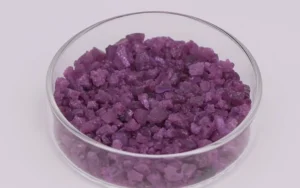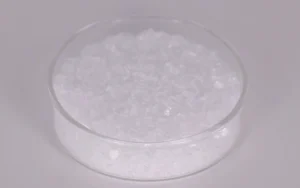Optics Materials
Purity. Precision. Performance.
At ULPMAT, we leverage our deep expertise in optics, rigorous quality control, and outstanding customization capabilities to provide high-purity, high-performance optics materials tailored for demanding applications in photonics, laser systems, and imaging technologies.
Chalcogenide Glass Materials
Chalcogenide glass is composed of elements such as sulfur (S), selenium (Se), and tellurium (Te), offering excellent infrared transmission and desirable glass-forming properties. As a high-performance IR optical material, it transmits well across the near-, mid-, and far-infrared spectrum and is widely used in various optical components.
Germanium single crystal is another key infrared optics material, widely used in infrared thermal imaging systems across both civilian and military sectors.
Compared to germanium, chalcogenide glass offers similar IR transmission performance at approximately 35% of the cost, with a lower thermo-optic coefficient allowing for the design of passive athermalized optical systems. It also features a broad operational temperature range (-40 °C to 70 °C), making it suitable for a wide range of applications.
However, challenges such as high thermal expansion and low softening point can make coating and surface processing more demanding.
Typical Infrared Optical Materials
- ZnS
- ZnSe
- Ge
- Si
- GaAs
Features and Advantages of Chalcogenide Glass
Composition Flexibility:
Primarily composed of S, Se, and Te, and can be combined with As, Ge, P, Sb, Al, or Si to form stable glass matrices. Halogen elements can also be introduced to create chalcohalide glasses.
High Transmittance:
Excellent transmission in the 1–3 μm, 3–5 μm, and 8–12 μm bands, covering key atmospheric windows for mid- and long-wave IR optics.
Superior Processability:
Produced via melt-quenching, enabling high efficiency and low-cost fabrication. Suitable for mass production of complex-shaped optics, with process efficiency over 10 times higher than diamond turning.
Thermal Stability:
Low thermo-optic coefficient contributes to improved focus and chromatic aberration control in thermal imaging systems.
Low Dispersion:
Supports achromatic and athermal optical designs, simplifying system architecture and reducing weight and cost.
DFM-Grade Fluoride Materials
Fluorides are optical materials with excellent UV, visible, and IR transmission, low refractive indices, and minimal dispersion — ideal for precision optics.
Typical Fluoride Materials:
CaF₂ (Calcium Fluoride)
MgF₂ (Magnesium Fluoride)
BaF₂ (Barium Fluoride)
SrF₂ (Strontium Fluoride)
AlF₃ (Aluminum Fluoride)
LiF (Lithium Fluoride)
Rare-Earth Fluorides:
YF₃ (Yttrium Fluoride)
YbF₃ (Ytterbium Fluoride)
DyF₃ (Dysprosium Fluoride)
CeF₃ (Cerium Fluoride)
LaF₃ (Lanthanum Fluoride)
NdF₃ (Neodymium Fluoride)
GdF₃ (Gadolinium Fluoride)
ErF₃ (Erbium Fluoride)




These fluorides offer high optical clarity, low refractive index, and low dispersion, making them ideal for both UV and IR optical systems.
Application Examples:
1. DUV Optical Components – Semiconductor lithography, UV laser windows
2. Infrared Optical Systems – IR windows and lenses
3. Radiation Detection & Dosimetry – Thermoluminescent dosimeters (TLDs)
4. Multilayer Optical Coatings – Anti-reflective and reflective coatings
Oxide Crystals
Aluminum Oxide (Al₂O₃)
Silicon Dioxide (SiO₂)
Magnesium Oxide (MgO)
Titanium Dioxide (TiO₂)

These oxide materials are widely used in optical, electronic, and laser applications for their excellent thermal stability, mechanical strength, and optical transparency across various wavelengths.
Contact us today to discuss your application or request a tailored quote.
Contact us
More Information
- PHONE:+86-29-88993870
- WHATSAPP:+8618291498609
- E-MAIL:sales@funcmater.com
- ADDRESS:A11, 5th Floor, Building 5, Digital China Xi’an Science Park, No. 20 Zhangba 4th Road, High-tech Zone, Xi’an, Shaanxi, China.

